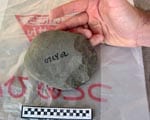Best-selling author, syndicated columnist and progressive talk-radio host David Sirota has covered the research of SMU’s Dr. Johan Sulaeman, an expert in labor economics and discrimination. The article published in the Sept. 30 issue of In These Times.
An assistant professor of finance in the Cox School of Business, Sulaeman and his co-authors analyzed 3.5 million Major League Baseball pitches and found that racial/ethnic bias by home plate umpires lowers the performance of Major League’s minority pitchers, diminishing their pay compared to white pitchers.
The study found that minority pitchers reacted to umpire bias by playing it safe with the pitches they throw in a way that actually harmed their performance.
Read the full article at In These Times.
EXCERPT:
By David Sirota
In These Times
Despite recent odes to “post-racial” sensibilities, persistent racial wage and unemployment gaps show that prejudice is alive and well in America. Nonetheless, that truism is often angrily denied or willfully ignored in our society, in part, because prejudice is so much more difficult to recognize on a day-to-day basis. As opposed to the Jim Crow era of white hoods and lynch mobs, 21st century American bigotry is now more often an unseen crime of the subtle and the reflexive???and the crime scene tends to be the shadowy nuances of hiring decisions, performance evaluations and plausible deniability.Thankfully, though, we now have baseball to help shine a light on the problem so that everyone can see it for what it really is.
Today, Major League Baseball games using QuesTec’s computerized pitch-monitoring system are the most statistically quantifiable workplaces in America. Match up QuesTec’s accumulated data with demographic information about who is pitching and who is calling balls and strikes, and you get the indisputable proof of how ethnicity does indeed play a part in discretionary decisions of those in power positions.
This is exactly what Southern Methodist University’s researchers did when they examined more than 3.5 million pitches from 2004 to 2008. Their findings say as much about the enduring relationship between sports and bigotry as they do about the synaptic nature of racism in all of American society.
First and foremost, SMU found that home-plate umpires call disproportionately more strikes for pitchers in their same ethnic group. Because most home-plate umpires are white, this has been a big form of racial privilege for white pitchers, who researchers show are, on average, getting disproportionately more of the benefit of the doubt on close calls.
Second, SMU researchers found that “minority pitchers reacted to umpire bias by playing it safe with the pitches they threw in a way that actually harmed their performance and statistics.” Basically, these hurlers adjusted to the white umpires’ artificially narrower strike zone by throwing pitches down the heart of the plate, where they were easier for batters to hit.
Finally, and perhaps most importantly, the data suggest that racial bias is probably operating at a subconscious level, where the umpire doesn’t even recognize it.
To document this, SMU compared the percentage of strikes called in QuesTec-equipped ballparks versus non-QuesTec parks. Researchers found that umpires’ racial biases diminished when they knew they were being monitored by the computer.
Read the full article at In These Times.
SMU is a nationally ranked private university in Dallas founded 100 years ago. Today, SMU enrolls nearly 11,000 students who benefit from the academic opportunities and international reach of seven degree-granting schools. For more information see www.smu.edu.
SMU has an uplink facility located on campus for live TV, radio, or online interviews. To speak with an SMU expert or book an SMU guest in the studio, call SMU News & Communications at 214-768-7650.



















